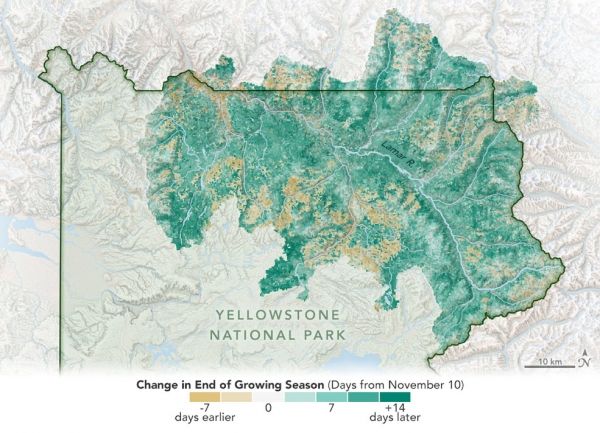The bison population has really exploded over the last two decades in Yellowstone National Park. This creates complex situations for wildlife managers when the animals follow good grazing opportunities beyond the boundaries of the park and come into contact with surrounding communities. A NASA study has now found a link between climate change effects on the productivity of grasslands and the proliferation of bison in Yellowstone, by compiling 20 years of data from two NASA Earth science satellites. The work also shows how the same data, available in near-real time, can aid the park’s conservation efforts by providing daily maps of green grass cover that help forecast the movements of bison.
The research project looked specifically at how long the growing season lasts in Yellowstone, from snowmelt in spring to first snowfall in autumn, and the vegetation that covers the land in between. The satellite data revealed that the season for vegetation growth has been getting longer, likely a result of climate change decreasing the severity of winters and warming average temperatures overall.
Studying national parks is helpful for this type of climate research, because human land use is restricted in these spaces. With little interference from people since Yellowstone was founded in 1872, scientists are better able to isolate climate change as a factor in any changes they observe there.
Continue reading at NASA Ames Research Center
Image via NASA Ames Research Center


